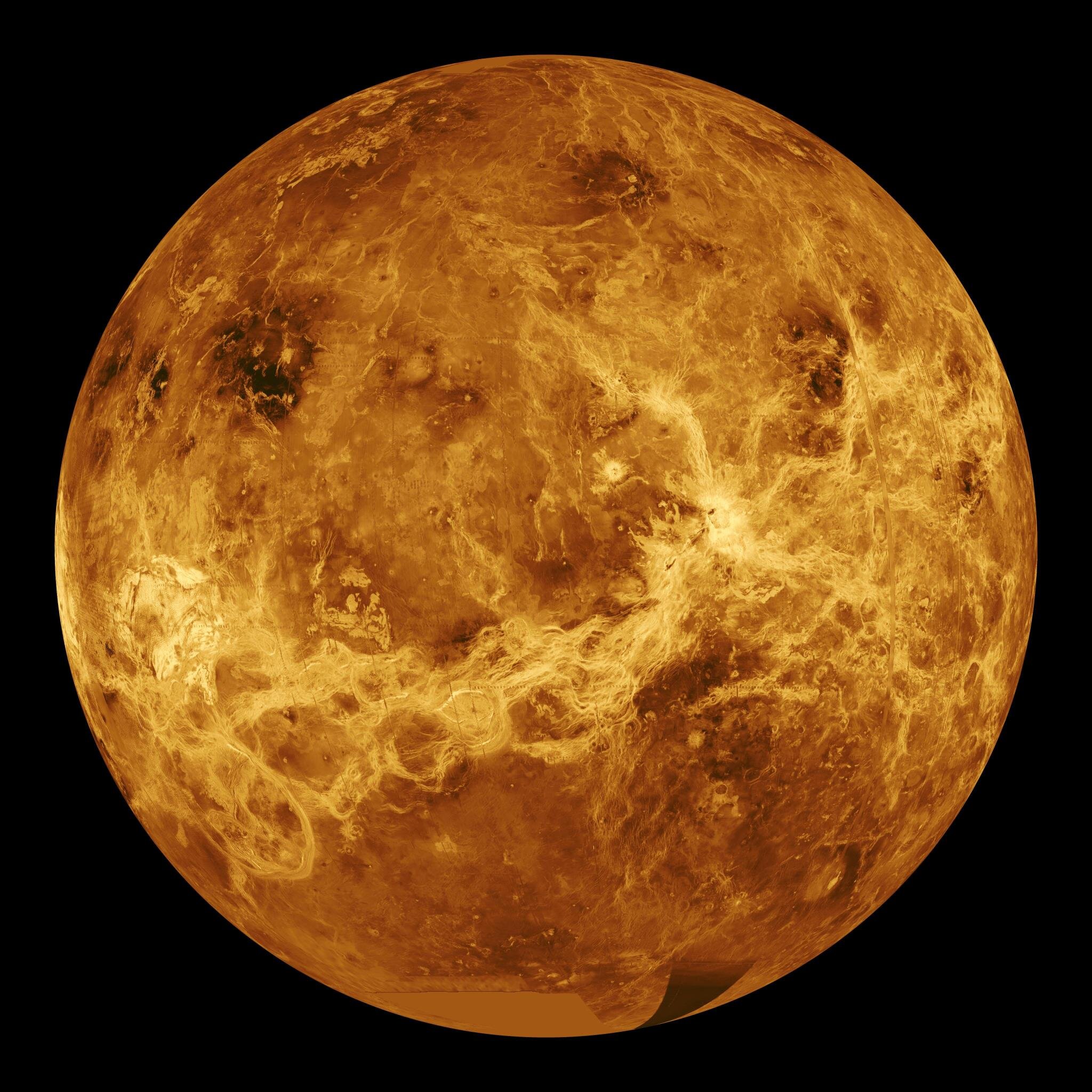An unexpected discovery about Venus' geology 🌋
Follow us on Google News (click on ☆)

Global view of Venus' surface centered at 180 degrees east longitude. Magellan radar mosaics are projected onto a simulated globe.
Credit: NASA/JPL-Caltech
On Earth, plate tectonics allows the recycling of the crust into the mantle, regulating its thickness. This process, called subduction, is absent on Venus. Yet, Venus' crust does not exceed 40 miles (65 km) in thickness, a figure much lower than expected.
The model suggests that the base of the crust becomes so dense that it detaches or melts. This phenomenon, similar to Earth's metamorphism, could explain active volcanism on Venus. Justin Filiberto, co-author of the study, emphasizes the importance of this discovery.
This unique dynamic offers a new perspective on Venus' geological evolution. It implies a deep recycling of materials, potentially fueling volcanism. Future space missions, such as DAVINCI and VERITAS, could validate these hypotheses.
The study also opens avenues for understanding the interaction between Venus' crust and atmosphere. The described processes could influence the chemical composition and dynamics of Venus' atmosphere. A better understanding of these mechanisms is essential.
What role does volcanism play in Venus' evolution?
Volcanism is a key player in planetary dynamics. On Venus, it could be fueled by crust recycling through metamorphic processes.
The study suggests that melting or delamination of the crust releases volatile elements into the mantle. These could then rise to the surface, triggering volcanic eruptions.
This mechanism offers an alternative to traditional models based on plate tectonics. It could explain the geological youth of Venus' surface, despite the absence of mobile plates.